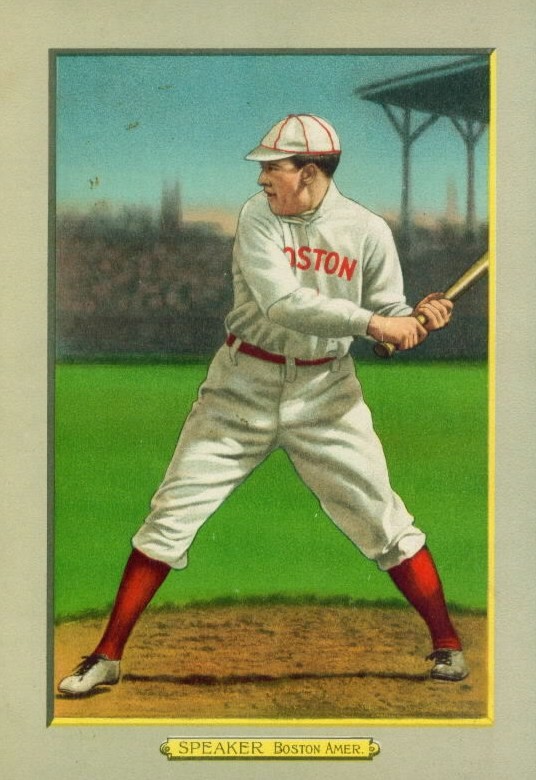
SABR Biography Project - http://sabr.org/bioproj/
In a follow-up to my inaugural piece in this vein, I’m looking at trades occurring this week (Apr 9 to 15) in baseball history.
This trade was essentially Dean Chance for Don Mincher and Jimmie Hall. Chance was still just 26, even though 3 years removed from his Cy Yong season in 1964. That year he led the AL in Wins, CG, SHO and IP, the last at age 23 possibly being a harbinger of future troubles. The next year, Chance regressed from 198 ERA+ to 108, and then produced a virtually identical season in 1966. Only problem was that Chance was victimized by 24 unearned runs in ’66 versus only 7 in ’65, with the result that his record slid from a solid 15-10 to only 12-17. So, exit Angels. Mincher was a solid, if unspectacular, first baseman who had some pop, with 23 and 22 HR in 1964 and 1965. When his HRs dropped to 14 in 1966 (even though his XBH increased by 2), the 29 year-old became expendable. Hall produced 5.4 WAR with 33 HR and 136 OPS+ in a stellar 1963 rookie season, but his offense had dwindled since then, down to 1.3 WAR in 1966.
Chance and Mincher immediately delivered for their new teams. Mincher had 156 OPS+ and 4.4 WAR in 1967, while Chance went 20-14, again leading the AL in CG and IP. But, Hall continued his downward slide in 1967 with only 27 extra-base hits, less than half of his rookie season total.
The 1967 pennant race was excruciatingly close, with the Twins bobbing up and down between a game up and a game down (never further ahead or behind) from Aug 31 all the way to the end of the season. With 3 games to play, the Twins led by a game with Chance starting against California. A 4-run 4th inning keyed by a leadoff HR by Mincher was Chance’s undoing. But, the Red Sox also lost that day, so the Twins went into Boston for the final two, still up a game. In the first of those contests, Carl Yastrzemski drilled a 7th inning 3-run HR off Jim Merritt and the Red Sox pulled even with Minnesota. So, one game left, winner take all. Chance got the ball on 3 days rest and the Twins staked him to an early 2-0 lead. But, a 2-run single by Yastrzemski in the 6th evened the game and 3 more runs in the frame off Chance and reliever Al Worthington sealed the Twins fate.
Chance had a similar season in 1968 but with less luck in his decisions, going only 16-16. But, that was about it. Six years with almost 1600 IP and nearly 6500 batters faced had taken their toll. Mincher regressed to only 0.5 WAR in 1968 and was exposed in the expansion draft, going to the Pilots. Mincher had 25 and 27 HR for Seattle and Oakland in 1969 and 1970, and was still contributing 5.7 WAR in part-time duty over his final two seasons in ’71 and ’72.
Jimmie Hall slid further in 1968 and the Angels dealt him in mid-season to Cleveland. Hall would appear briefly for the Indians and three more teams, all apparently hopeful he could regain the top form he showed at the start of his career. But, it never happened. As an indication of how much and how quickly Hall declined after his fast career start, he is one of only 35 players since 1901 to accumulate 14 WAR in his first 3 seasons. A great majority of these 35 are HOFers. Hall’s career 14.5 WAR is easily dead last in the group, almost 10 WAR behind the next lowest total of 24.1 for Pete Reiser.
Ironically, the PTBNL in this deal would last the longest in the majors. Jackie Hernandez served as the prototypical light-hitting utility infielder through the 1973 season, with one year as the regular shortstop for the 1970 Royals. His career WAR total of -5.3 is impressive in its magnitude for just over 1600 PAs, ranking 11th lowest since 1901 among non-pitchers with fewer than 1700 PAs.
April 15, 1972 – The Houston Astros traded Lance Clemons and Scipio Spinks to the St. Louis Cardinals for Jerry Reuss.
St. Louis let Reuss go after his age 22 season, his first full year in their starting rotation. His 78 ERA+ and 4.6 BB/9 in 1971 no doubt influenced that decision. But, the two pitchers the Cardinals received from Houston ended up pitching fewer career innings combined than Reuss had pitched in that 1971 season.
Reuss, of course, went on to a long and successful career while the Cardinals struggled to find any reliable left-handed starter until Dave LaPoint, John Tudor and Joe Magrane in the 80s. From 1972 to 1984, the Cardinals got only 59 wins from left-handed starters, most of those from LaPoint in 1981-84. In the same period, Reuss compiled a 156-125 record. St. Louis did, though, get some measure of satisfaction in beating Los Angeles in the 1985 NLCS, with Tudor besting Reuss in game 4.
Hindsight is always perfect, but the cautionary note here might be to not give up on 22-year old pitchers, raw though they may be. More especially so if they’re good enough to start 35 games in a season.
Finally, this trade.
April 11, 1954 – The St. Louis Cardinals traded Enos Slaughter to the New York Yankees for Emil Tellinger (minors), Bill Virdon and Mel Wright.
